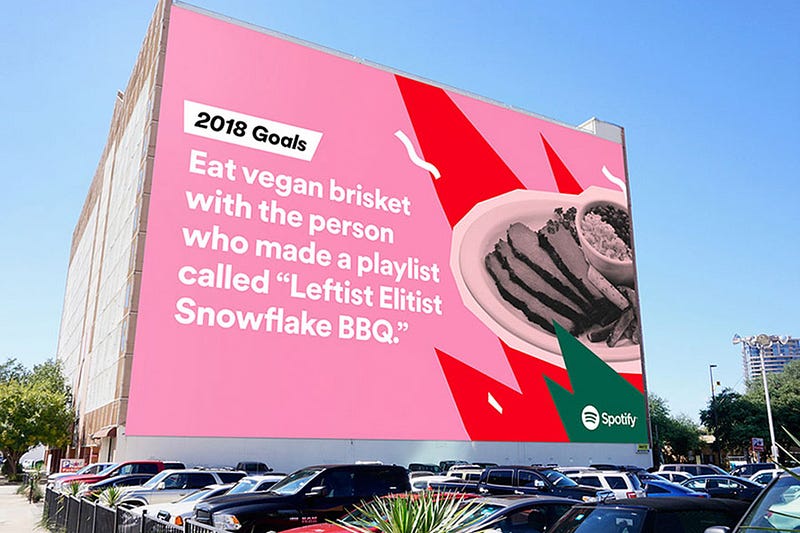trends
How U.S. Millennials are Shaping Online Fast Moving Consumer Goods (FMCG) Shopping Trends
According to the latest Nielsen Category Shopping Fundamentals study, as detailed in our recent Millennials on Millennials report, 60% of U.S. consumers’ FMCG decisions are still made at the shelf. This is a key insight for retailers, but so is understanding the influence that digital has on influencing consumers on their way to the shelf. Not surprisingly, Millennials are more active on social media than older generations, and this affects the way they look for information as they shop. For example, Millennials are significantly more likely than the broader population to conduct online research for common items like food and cleaning products.
Source: How U.S. Millennials are Shaping Online FMCG Shopping Trends
The freezers at your local pharmacy are watching you
A startup named Cooler Screens is piloting a new door for commercial freezers and refrigerators that’s equipped with a camera, motion sensors, and eye tracking in six Walgreens pharmacies around the country, including the one off of Union Square. The doors can discern your gender, your general age range, what products you’re looking at, how long you’re standing there, and even what your emotional response is to a particular product.
Source: The freezers at your local pharmacy are watching you
The Rise of the Robot Reporter
Fast, accurate and no typos! Bloomberg News, The Washington Post and The Associated Press test out machine-generated journalism.
All This Newfound Cynicism Is Going to Hamper Big Tech
The public no longer gives Facebook, Google, Twitter, and the other tech giants the benefit of the doubt. And that’s going to hamper their growth.
Source: All This Newfound Cynicism Is Going to Hamper Big Tech | WIRED
Apple, the iPhone, and the Innovator’s Dilemma
IF YOU RE-READ the first few chapters of The Innovator’s Dilemma and you insert “Apple” every time Clayton Christensen mentions “a company,” a certain picture emerges: Apple is a company on the verge of being disrupted, and the next great idea in tech and consumer electronics will not materialize from within the walls of its Cupertino spaceship.
Source: Apple, the iPhone, and the Innovator’s Dilemma | WIRED
Marshmello Just Live Streamed on Fortnite…So Just What is a Concert?
On Saturday I watched my 12 year old son scoff down his meal so that he could rush upstairs to get logged on with his friends in time for a Marshmello live streamed event on Fortnite. As you can see from the video this was Marshmello appearing as a Fortnite character, on stage with his music playing. Meanwhile Fortnite players moved around the ‘concert venue’ showing off their dance moves – all of which of course had been purchased in app with Fortnite VBucks. In-game live experiences like this are nothing new, but it may just be that we are beginning to get to a tipping point in shared gaming experiences for Gen Z that will shape their entertainment expectations for years to come. Tweens and teens are already spending more time socializing via social media than real world contact, connected gaming is adding to that mix.
Source: Marshmello Just Live Streamed on Fortnite…So Just What is a Concert? | MIDiA Research
Super Bowl commercials 2019: It’s the year of the sad robot
Robots and artificial intelligence are everywhere in 2019’s crop of Super Bowl commercials. Some of the devices are seriously bummed out.
Source: Super Bowl commercials 2019: It’s the year of the sad robot — Quartz
Facebook is a persuasion platform that’s changing the advertising rulebook
The way people interact with Facebook is changing how they can be persuaded to think about or do a particular thing.
With tons of information presented at the same time, your brain is forced to decide quickly what’s relevant or interesting. Facebook and other social media services take advantage of this – pushing you to slip easily from thought to behavior. It emphasizes your impulses and decreases the opportunities for you to think more thoroughly about your perceptions, attitudes and decisions.
Source: Facebook is a persuasion platform that’s changing the advertising rulebook
MIT built a robot that plays Jenga
The robot’s ability to make decisions based on how a Jenga block feels could help with the production of consumer electronics, like cell phones.
The BuzzFeed Layoffs as Democratic Emergency
Digital media has always been a turbulent business, but last week’s layoffs suggest a reason for panic. The cause of each company’s troubles may be distinct, but collectively the blood bath points to the same underlying market pathology: the inability of the digital advertising business to make much meaningful room for anyone but monopolistic tech giants.
Source: Opinion | The BuzzFeed Layoffs as Democratic Emergency – The New York Times
IBM builds a more diverse million-face dataset to help reduce bias in AI
Encoding biases into machine learning models, and in general into the constructs we refer to as AI, is nearly inescapable — but we can sure do better than we have in past years. IBM is hoping that a new database of a million faces more reflective of those in the real world will help.
Source: IBM builds a more diverse million-face dataset to help reduce bias in AI | TechCrunch
Love in the Age of Data
Ours is the data-driven age. Arguments and claims made in the media and in the academy are backed up with harvested “empirical” information drawn from data collection technologies that make dystopian cybernetic dreams seem like relics from the ancient past. Data sets control what we see on our internet searches, social media feeds, and television screens, yet that process of selection remains deliberately obscured. Data as a methodology percolates through every area of the university, and new appointments (even in the so-called “arts”) reward scholars who apply data analytics software to understand everything from gender to poetry. Mobile apps manage everything from eating habits to menstrual cycles using data-formatted algorithms, while “smart condoms” collect sexual movements into large aggregated sets which set a new blueprint for the sexual future.
Source: Love in the Age of Data – Los Angeles Review of Books
The Tech Revolt
They Slacked. They messaged on Signal. They circulated pledges on Google Docs. They talked on the phone. They spoke quietly to one another in the cafeteria and spoke up at company-wide meetings. Whether it was protesting projects with ICE and the Chinese government or walking out to demand better treatment of women, political activism has entered tech with a force that the industry has never experienced.
Laying the Pipes of a Post-Advertising World
The shift from brands and advertising to pipes and subscriptions is inevitable — and well underway. Want proof? Look to Disney.
Source: Laying the Pipes of a Post-Advertising World – NewCo Shift – Medium
How Brands Turned Trolling Into a Marketing Strategy
We were once responsible for describing our own tastes, which meant we sometimes lied about them. At the very least, we had strategically selective memories.
But streaming services have put an end to that. Each year-end now brings massive number dumps from the likes of Spotify and Netflix, as if to remind us exactly how much personal information they can hoover up through users’ relationship to entertainment. Perversely enough — and to a strange acclaim in the world of creative marketing — these two digital giants have used their extensive findings to roast their outlying customers.
Source: How Brands Turned Trolling Into a Marketing Strategy
Apple’s Precarious and Pivotal 2019
The iPhone has simply been too good of a business. And it’s hard to see what tops it. Certainly in the near term. If Services is to carry Apple in the future, it will likely be only after years of relatively stagnant iPhone revenue growth mixed with a rising overall market. In other words, time and the broader world will have to catch up. And then Apple can have their “Microsoft Moment” — a services-based resurrection of growth.
The Biggest Technology Failures of 2018
From gene-edited babies to guaranteed-fatal brain uploads, it was a bumper year for technology misfires and misuses
Source: The Biggest Technology Failures of 2018 – MIT Technology Review – Medium
America Pushes Allies to Fight Huawei in New Arms Race With China
With 5G networks about to remake the internet, the Trump administration fears decisions made in the next six months on China’s role will resonate for decades.
Source: America Pushes Allies to Fight Huawei in New Arms Race With China – The New York Times
‘Ellie’ Was a Rising Star in the Gaming World. Or Was She?
The strange saga of a fake female gamer and her encounter with the misogynistic world of e-sports. Women who compete professionally in e-sports face heckling from teammates and fans, and are sometimes accused of serving as fronts for male players. At the same time, team owners with an eye toward reaching a potentially gigantic untapped market of young female viewers remain eager to diversify their rosters to provide an entry point for girls who might never have thought of video
Source: Opinion | ‘Ellie’ Was a Rising Star in the Gaming World. Or Was She? – The New York Times
Fake news on Twitter during the 2016 U.S. presidential election
There was a proliferation of fake news during the 2016 election cycle. Grinberg et al. analyzed Twitter data by matching Twitter accounts to specific voters to determine who was exposed to fake news, who spread fake news, and how fake news interacted with factual news. Fake news accounted for nearly 6% of all news consumption, but it was heavily concentrated—only 1% of users were exposed to 80% of fake news, and 0.1% of users were responsible for sharing 80% of fake news. Interestingly, fake news was most concentrated among conservative voters.
Source: Fake news on Twitter during the 2016 U.S. presidential election | Science















